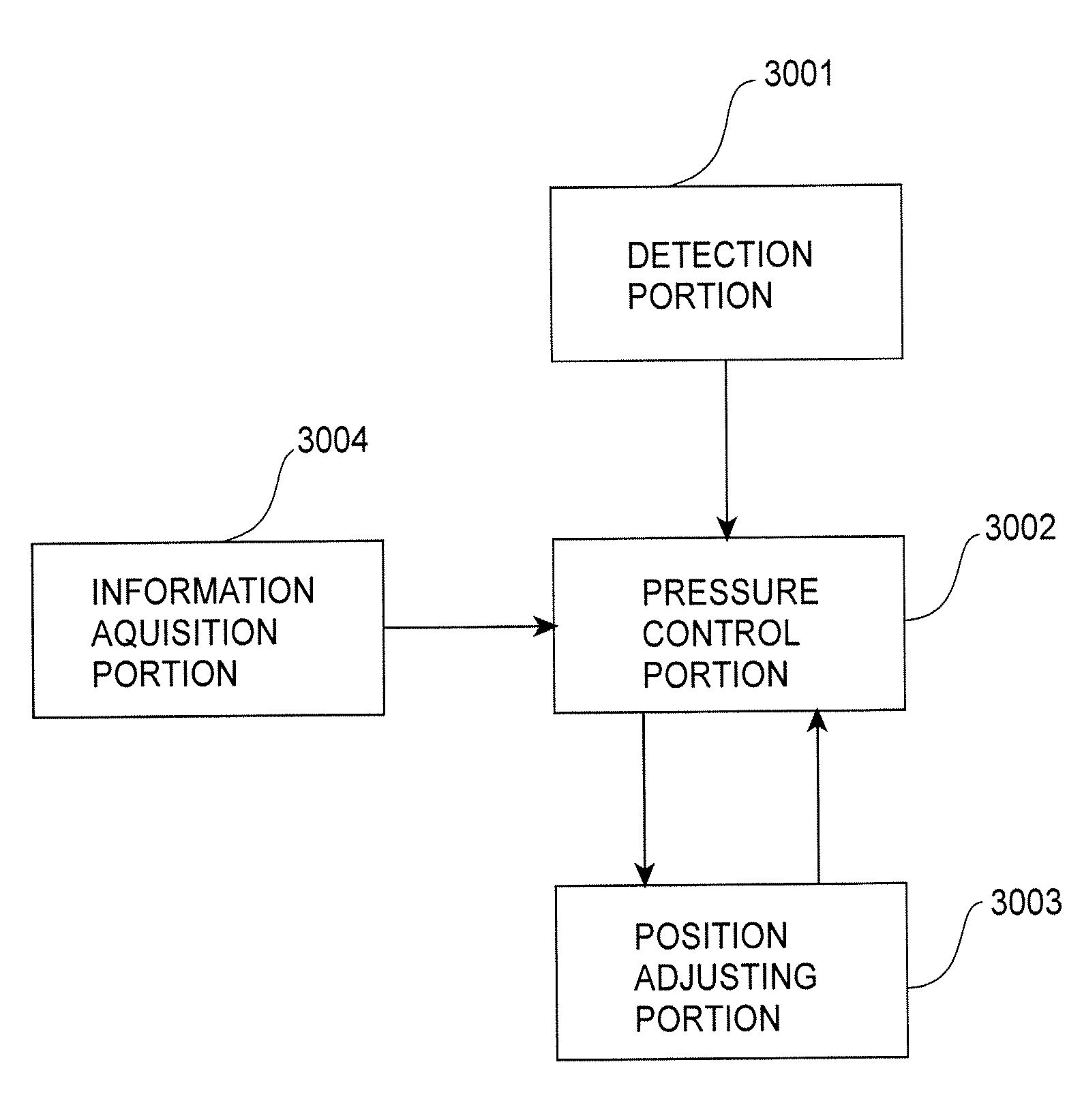Imprint method, imprint apparatus, and process for producing chip
- Summary
- Abstract
- Description
- Claims
- Application Information
AI Technical Summary
Benefits of technology
Problems solved by technology
Method used
Image
Examples
first embodiment
[0047] An imprint method according to First Embodiment of the present invention will be described with reference to FIGS. 1A to 1D.
[0048] Referring to FIG. 1A, a pattern formation material 1106 onto which an imprint pattern 1115 of a mold 1105 is imprinted is disposed on a substrate 1104. The mold 1105 and the substrate 1104 are disposed opposite to each other and a distance therebetween is gradually decreased, with the result that the mold 1105 and the pattern formation material 1106 contact each other.
[0049] Thereafter, a pressure P1 is applied between the mold 1105 and the substrate 1104, whereby a contact area of the pattern formation material 1106 with the imprint pattern 1115 is increased (FIGS. 1B and 1C). In FIG. 1B, arrows 1198 and 1199 represent an example of directions in which the contact area is to be increased.
[0050] Incidentally, in this embodiment, the increase in contact area includes not only the case where the contact area is extended in an in-plane direction a...
second embodiment
[0118] Next, the imprint apparatus according to Second Embodiment of the present invention will be described with reference to FIG. 3.
[0119] Herein, the imprint apparatus means such an imprint apparatus that the imprint pattern of the mold is imprinted onto the pattern formation material on the substrate and includes at least the following apparatus members or portions.
[0120] More specifically, the imprint apparatus includes a mold holding portion for holding the mold and a substrate stage for mounting thereon the substrate. The mold holding portion includes a chucking mechanism for chucking the mold.
[0121] The imprint apparatus further includes a detection portion 3001 for detecting the pressure or load exerted between the mold and the substrate, a pressure control portion 3002 for controlling the pressure exerted between the mold and the substrate, a position adjusting portion 3003 for adjusting the positional relationship between the mold and the substrate, and an information ...
third embodiment
Process
[0134] Next, a process for producing a chip according to Third Embodiment of the present invention will be described.
[0135] In the chip production process of this embodiment, as the imprint apparatus, it is possible to utilize the imprint apparatus used in Embodiments described later.
[0136] More specifically, the imprint pattern of the mold is imprinted onto the pattern formation material (e.g., the photocurable resin material). The photocurable resin material after the imprint pattern is imprinted thereon by energy irradiation with UV rays or the like ordinarily loses its photocurable property.
[0137] Thereafter, etching of the substrate (e.g., silicon substrate) is effected by using the pattern formation material as a mask.
[0138] Incidentally, it is also possible to remove a portion of the resin material at the recess formed on the resin material (herein, this portion is referred to as a “residual film”) by ashing (oxygen reactive etching), as desired, depending on the t...
PUM
| Property | Measurement | Unit |
|---|---|---|
| Pressure | aaaaa | aaaaa |
| Area | aaaaa | aaaaa |
Abstract
Description
Claims
Application Information
 Login to View More
Login to View More - R&D
- Intellectual Property
- Life Sciences
- Materials
- Tech Scout
- Unparalleled Data Quality
- Higher Quality Content
- 60% Fewer Hallucinations
Browse by: Latest US Patents, China's latest patents, Technical Efficacy Thesaurus, Application Domain, Technology Topic, Popular Technical Reports.
© 2025 PatSnap. All rights reserved.Legal|Privacy policy|Modern Slavery Act Transparency Statement|Sitemap|About US| Contact US: help@patsnap.com



